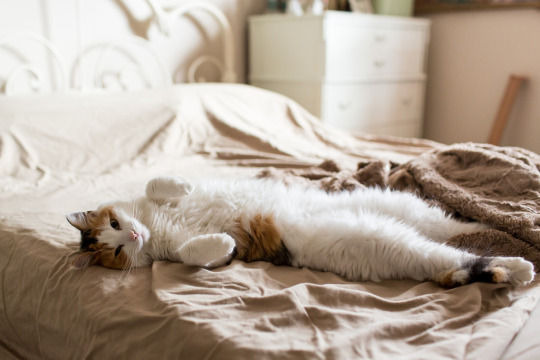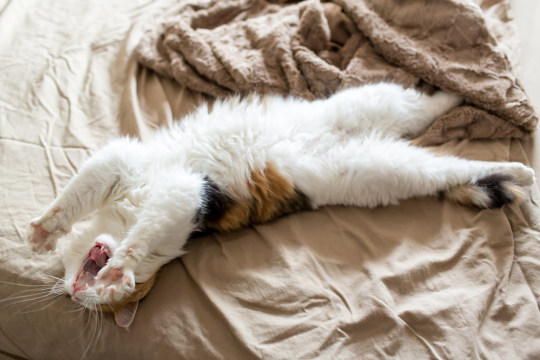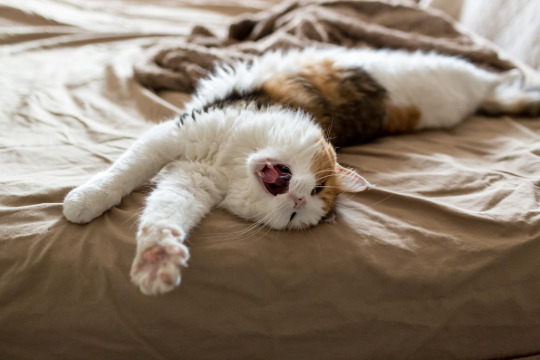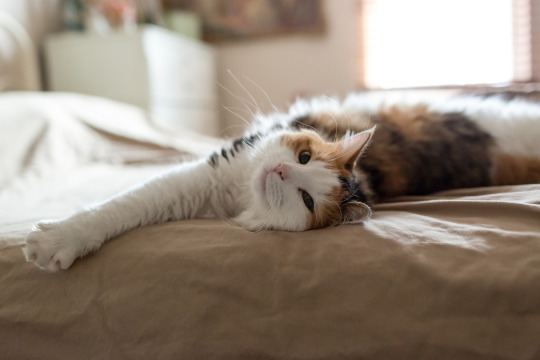Text
32K notes
·
View notes
Text
California Spangled Cat Origin
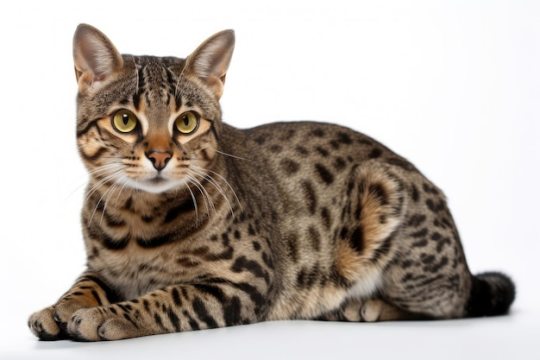
The California Spangled is a breed of domestic cat that was bred to resemble spotted wild cats, like the ocelot and leopard.
Inspired by the poaching death of a leopard, the anthropologist Louis Leakey motivated Paul Arnold Casey, Jr. of California to breed a domestic cat resembling a small leopard in order to emphasize how important it was to preserve the leopard.
CREDITS TO WIKI: California Spangled
#california spangled#cat#cat breed#cute#cat facts#cat fact#cats#interesting#science#genetics#biology#animals#cat origin#cat breed origin#history#leopard#small leopard#domestic cat
42 notes
·
View notes
Note
Hello! Do you know anything about the genetics behind the silver tips on Russian blue fur? I know they're blue, but I also know there are plenty of blue cats without the silver tipping. Unless they're dilute to the point they don't produce enough eumelanin for the whole hair???
Bengals have a "glitter" gene (Fgfr2), but as far as I know, there is no evidence that russian blues have the same or even similar gene. Still, their silver tipping is probably genetic, and not related to the dilution: russian blacks and whites also exist, albeit both are very rare, and i believe they need to have that shimmery coat too.
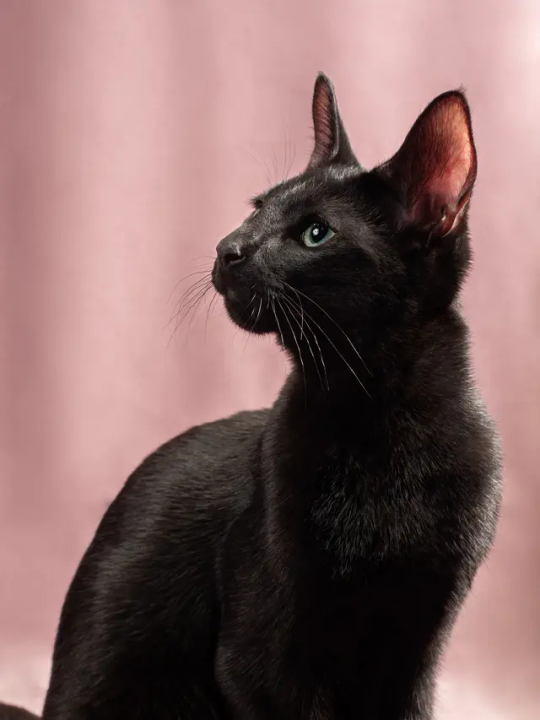
Golash The Legend of Zorro
62 notes
·
View notes
Text
American KEUDA Breed Fact

The name (American KEUDA) is an acronym of "Kitten Evaluation Under Direct Assessment", a program in Texas, Oklahoma, and New Mexico in the 1980's, that was attempting to breed a superior quality barn cat from semi-feral specimens. The aim of the program was to produce a cat with the hardest qualities and strongest genes.
In 2002 the breed was standardized and defined. It is intended to focus on behavioral traits rather than physical characteristics.
CREDITS TO KUCING.BIZ
#cat#cute#cat facts#cat fact#cats#interesting#science#genetics#biology#animals#cat history#cat breed#cat breed history#american keuda#keuda#kitten evaluation under direct assessment#barn cat#barn cat breed
25 notes
·
View notes
Text
WOWWWW!!!!!!
The Governing Council of the Cat Fancy (UK) posted this to their Facebook page today:
We are very excited to announce our NEW RECOGNISED BREED - The Transylvanian! 🤩
'Indigenous to the woodlands and forests around the Carpathian Mountain areas of Romania and Hungary, the Transylvanian cat is the most recently discovered natural breed in the world.
They have fascinating features such as the reverse Karparti coat, born white, over the first 12 months the kitten grows a black, blue or sometimes a red coat whilst leaving the points of the ears, nose and paws white. Basically a reverse point! The Transylvanian is thermal too, being lighter in summer and darker in winter.
The foundation breeders led by Beverly Elian (WCF Judge) are based in Romania, Hungary, Switzerland and in the UK with Stuart & Amanda Brass.
Extensive testing has occurred on all four generations supported by Leslie Lyons and it appears the breed is robust with no genetic or hereditary issues appearing in any of the litters.'
Not seen and heard enough? You can see our newly recognised Transylvanian at the Feline Fair! Buy your tickets here - https://tinyurl.com/5dm7kp9a! 🎟️

#cat breeds#rare breeds#new breeds#cat#cute#cat facts#cat fact#cats#interesting#new cat breed#cat genetics#karparti cats#reverse karparti#biology#science#reverse point#governing council of the cat fancy#UK#cat fancy#feline fair#transylvanian#aww#animals#transylvanian cat#transylvanian cat breed#transylvanian breed#exotic#cool
14K notes
·
View notes
Text
Ragdolls and Ragamuffins
A Ragdoll cat is a pointed breed with blue eyes. Most variations from that are not considered Ragdolls.
These points will be significantly darker than the base of their bodies. ↓↓↓


A Ragamuffin can be any color or coat pattern except pointed. They can have any eye color.
This breed was created by crossing Ragdolls with other longhaired cats, including Turkish Angoras, Himalayans, Persians and longhaired domestic cats. ↓↓↓


CONTROVERSY
The founder of Ragdoll cats and owner of Josephine (founder mother cat of the Ragdolls), Ann Baker, held stringent control over the breed and its classifications. This didn’t sit well with some admirers and caused a group of Ragdoll breeders to depart from Baker and her strict rules. After some hostile years, the group ended up with the Ragamuffin breed.
CREDITS TO LITTER ROBOT BLOG & ASPCA PET INSURANCE
#cat#cute#cat facts#cat fact#cats#interesting#science#genetics#biology#animals#ragdoll#ragdoll cat#ragdoll breed#ragdoll cat breed#ragamuffin#ragamuffin cat#ragamuffin breed#ragamuffin cat breed#cat breeds#cat breed origins#feline#feline history#cat history#cat controversy
35 notes
·
View notes
Text
History of Ojos Azules

Cats with dark blue eyes were discovered in New Mexico among feral cat populations. The first cat, discovered in 1984, was a tortoiseshell named Cornflower. She was bred to males without the trait, which proved to be dominant, as all her kittens showed it. The breed was founded and named Ojos Azules, Spanish for "Blue Eyes."
Ojos Azules are remarkable for their deep blue eyes. Unlike the blue eyes seen linked to the genes in bicolor cats and cats with point coloration, both of which suppress pigmentation, this gene is not linked to any certain fur color or pattern, giving the opportunity to have cats with dark coats and blue eyes. The eyes' color does not cause squinting, deafness or cross-eye. Ojos Azules are a very rare breed. In 1992, only ten were known.
The breed, in both short and long hair variety, was accepted for registration by TICA in 1991. The TICA Ojos Azules Breed Group Standard is dated January 5, 2004. It was recently discovered that cranial defects may be linked to the gene, and breeding was temporarily suspended.
Following genetic investigation by Solveig Pflueger, breeding resumed in a small way with attempts to breed Ojos Azules without the lethal genetic defects. It was discovered that when the gene is homozygous it causes cranial deformities, white fur, a small curled tail and stillbirth. However, when the gene is heterozygous, those lethal genetic mutations do not manifest.
CREDITS TO CATS WIKI
#biology#animals#genetics#science#interesting#cats#cat fact#cat facts#cute#cat#ojos azules#ojos azules cat#ojos azules cat breed#ojos azules breed#blue eyes#spanish#TICA#cats wiki#cat genetics#cat eyes#cat eye colors#animal eyes
5 notes
·
View notes
Text
American vs European Burmese


LEFT: AMERICAN
4 standard colors: sable (corresponds brown), blue, champagne (corresponds chocolate) and platinum (corresponds lilac)
RIGHT: EUROPEAN
10 standard colors: brown, blue, chocolate, lilac, red, cream, brown tortoise, blue tortoise, chocolate tortoise and lilac tortoise


LEFT: AMERICAN
big eyes, with roundish form, wide set, slightly surprised
RIGHT: EUROPEAN
big and wide set eyes with an easy decline to the nose in oriental manner
the top line of the eye is straight with the bottom line rounded off

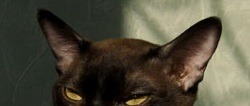
LEFT: AMERICAN
ears of average size, wide at the basis, rounded off on the ends, rather wide set
in comparison with the European, they are of smaller size, located closer and more vertically to each other
RIGHT: EUROPEAN
ears low set of average size, in a profile they are slightly inclined forward; holding of ears is wide enough
the external line of ears continues the cheek line




LEFT: AMERICAN
the head is shorter and wider than the European
muzzle has roundish form, with roundish outlines of all parts and absence of flat surfaces
cheeks full
RIGHT: EUROPEAN
muzzle is a short obtuse wedge, with slightly roundish top part between ears
wide cheekbones and jaws, strong chin
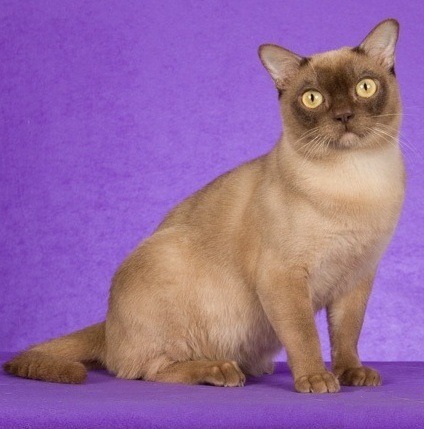
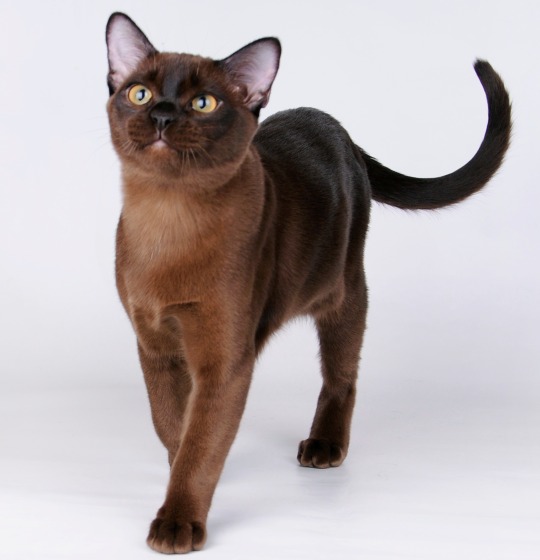
LEFT: AMERICAN
compact and heavy build, developed muscles
feet are not thin
pads have round form
RIGHT: EUROPEAN
average size, elegant by sight
compact but a little easier skeleton
feet are of average length, rather thin
pads are graceful, oval
American Burmese have 2 various lines inside the breed: TRADITIONAL & CONTEMPORARY
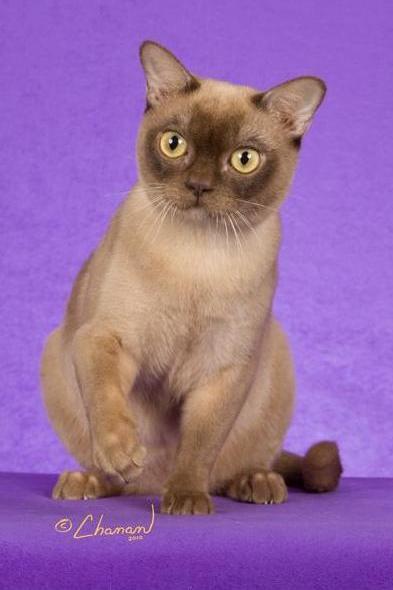
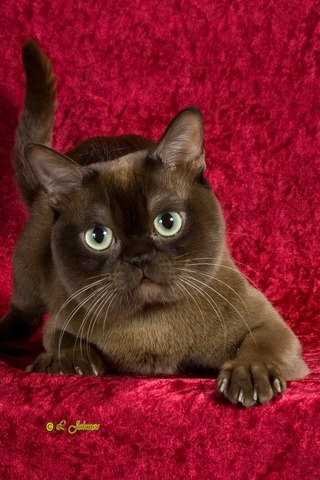
LEFT: TRADITIONAL BURMESE
RIGHT: CONTEMPORARY BURMESE
The Contemporary Burmese have shorter noses, muzzles and a deeper nose break than Traditional Burmese. Their blood lines also carry a lethal head defect, unlike the Traditional Burmese.
Contemporary Burmese became so popular due to their concave profile being very successful in show halls. This success made them more desirable, and the defective gene was spread.
CREDITS TO BURMACHARM.COM & BURMESEINFO.RU
#cats#cat facts#cat fact#science#interesting#biology#genetics#cute#cat#burmese#burmese cats#burmese facts#breeds#european burmese#american burmese#traditional burmese#contemporary burmese#burmese breed
3 notes
·
View notes
Text
I have no where to put thoughts to I'm just gonna yap here about cats
Did you guys know that the most dangerous wild cat (by statics) is technically also one of the smallest. It catches it's pray 60% percent of the time when a lion normally catches only around 30% I believe.
Black footed cats are wild and are only around 2-5 pounds. However they are considered the "words deadliest cat" because of the 60% hunt successes rate.
Also most people aren't allergic to cat fur itself. They are allergic to a protein in saliva, dander and urine. And adding powered egg (I believe it's powered egg yoke spcifically) can help or completely get rid of the allergies for some people ?
Also while orange female cats are rate all calico are either female are intersex so there are no male calico cats technically
This is because of the genes for the patterns of calico cat being on the X chromosome and not on the Y.Also tabby is technically not a breed. It's a type of coat pattern. I believe most tabby cats are mixed breed cats.Also most if not all cats are crepuscular and not nocturnal, meaning they are most active at dusk and dawn.
There is also sand cats which I like to call the fennec foxes of cats. They have a light coat and have pawnpads for for extreme hot and cold from the desert they live. They are also quite solitary cats just like the Blackfooted cat.
Both sand cats and black footed cats are very anti social and only go together for breeding and or a mother cat taking care of kittens. Though not much is known due to the fact they tend to be very solitary and thatd makes it hard to research them
Here some pictures of the black footed cat and the sand cat
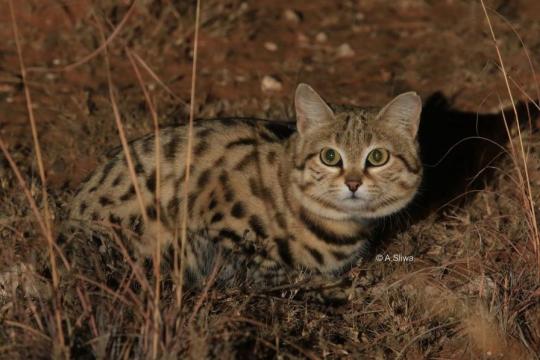
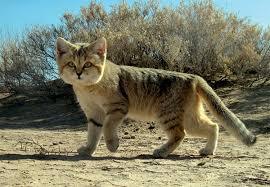
12 notes
·
View notes
Text
マドあけなさいよ 出かけるのよ
Hey, open this window 'cause I'm going out
7K notes
·
View notes
Note
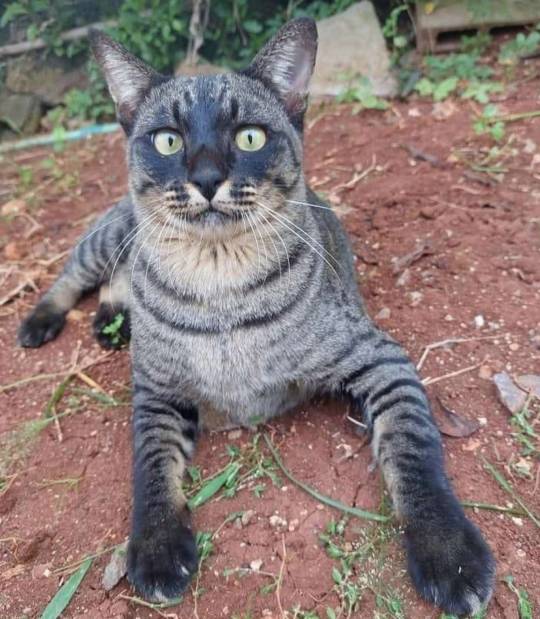
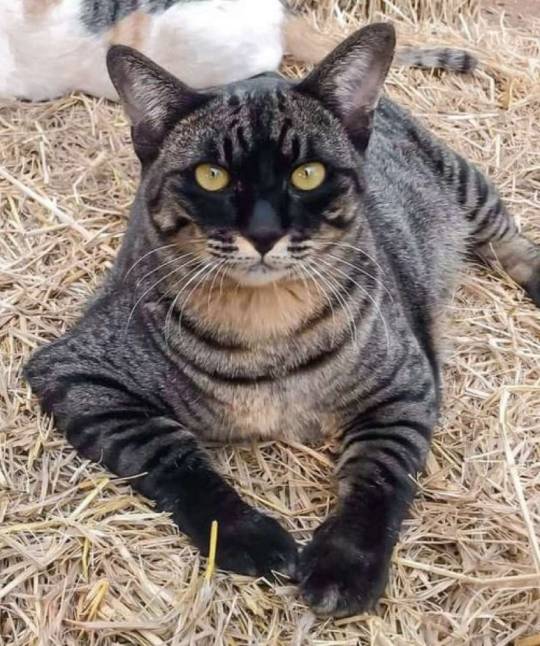
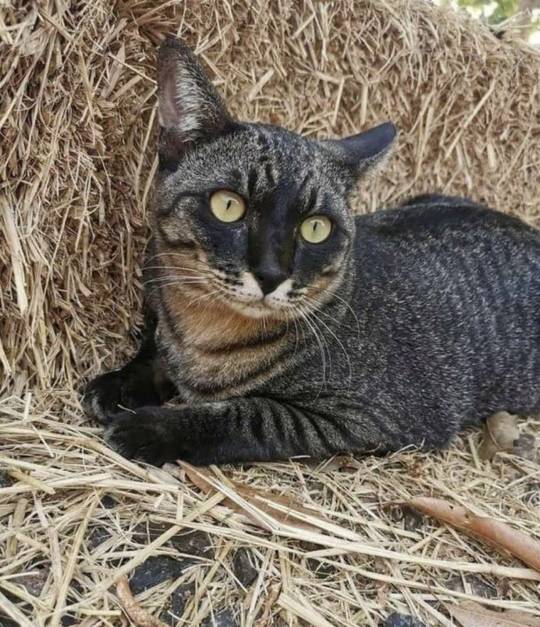
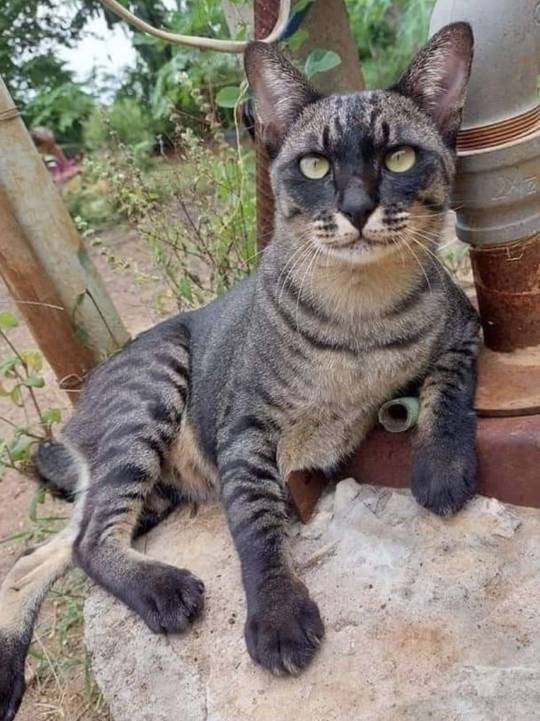
would you happen to be able to tell whats up with this guy? he has a very interesting fur pattern! appanretly his name is Bat and his from Thailand. source (theres more pics of him if you want to check)
Since I started this blog I’ve wanted to find this cat again but wasn’t sure how to even begin looking him up.
So thank you, especially for including the source!
Superficially it appears very similar to the charcoal coloration in the Bengal, albeit with what appears to be mackerel stripes instead of the distinctive rosettes.
He even has the characteristic “zorro” mask.
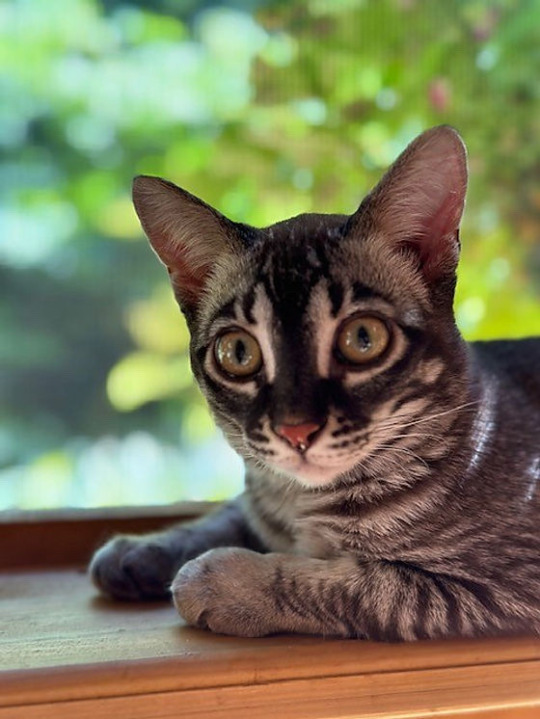
(source: Tikka Sky Bengals)
Bat is featured on the Messybeast page as a “randomized charcoal pattern cat.”
He also reminds me a little of the grizzle pattern found in the Chausie breed, although obviously the similarity isn’t as close as it is with the charcoal pattern.
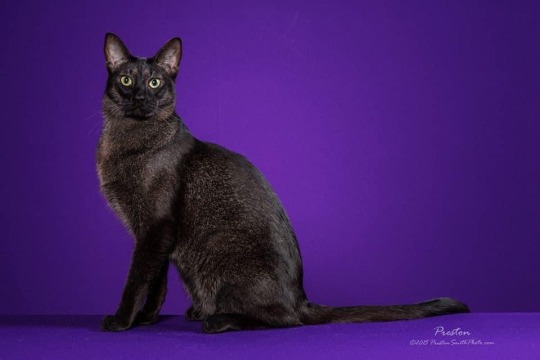
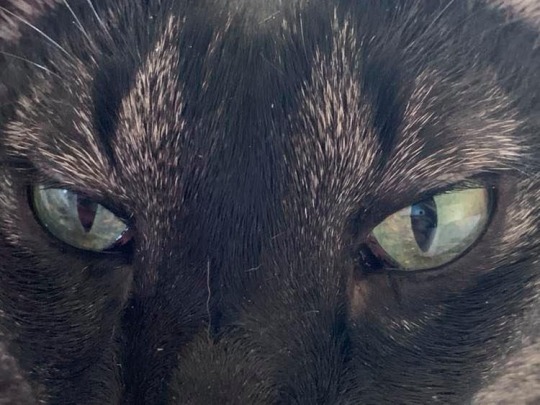
(source: Osi the Chausie)
It appears that Bat passed away early last year but the page is steal featuring his son
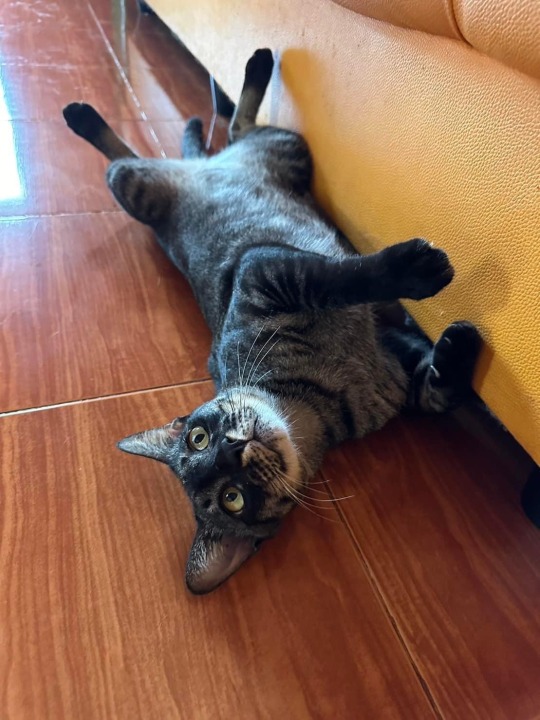
So we know whatever he has going on is inherited.
Thailand is known for the energence of wild, unique patterns in their cats. If you see a weird cat online that’s not edited or AI there’s a good chance it’s from Thailand.
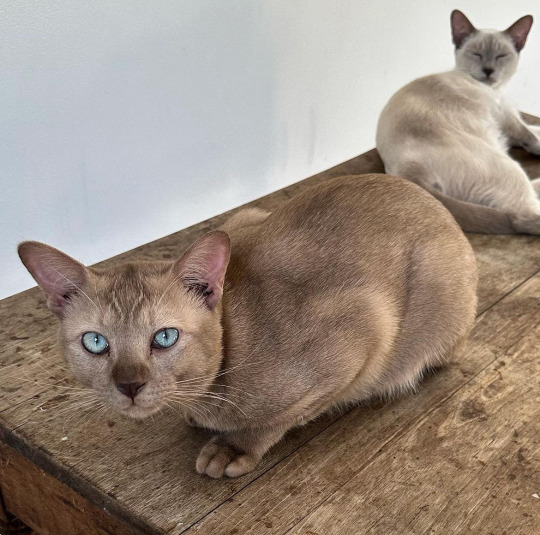
(source: Indian Spring Cats)
Like the Wila Krungthep or Bangkok mocha.
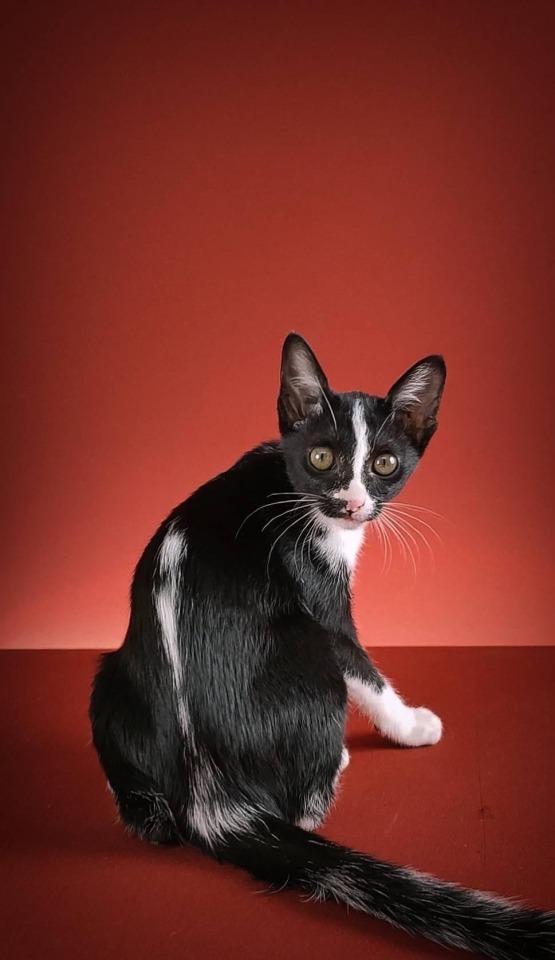
(source)
Or cats with atypical white spotting, many of which sport a dashing dorsal stripe.
So I don’t have a specific answers. Maybe @amber-tortoiseshell has a better idea?
1K notes
·
View notes
Note
Can you explain what rufousing is?
Rufousing is a polygenic trait which influences the “richness” or “warmth” of phaeomelanin pigment in agouti cats.
Polygenic means there isn’t just one “rufous gene,” but rather multiple genes which influence the phenotype. When it comes to rufousing in cats these genes have not yet been isolated and identified.
That hasn’t stopped breeders from being able to select for more or less rufousing, though! The ruddy Abyssinian being an excellent example.
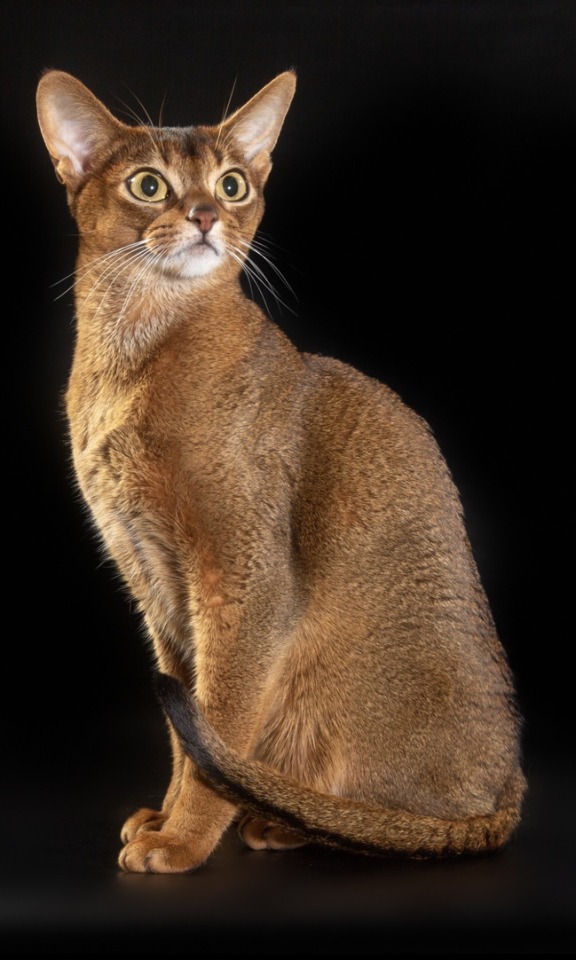
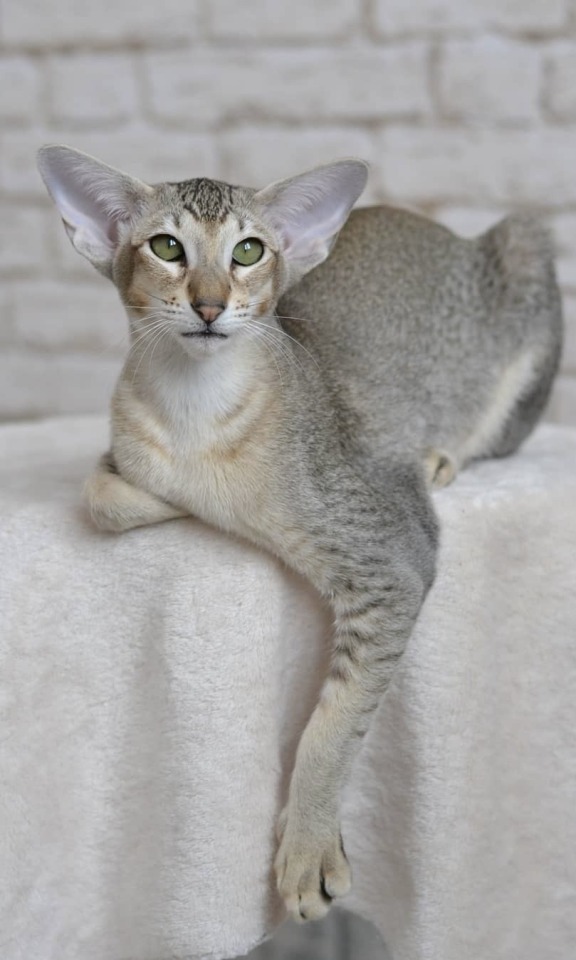
On the left is the ruddy Abyssinian WCF Ch Lissana's Fiesta and on the right is White Wolf Phaeton.
These are both black-based ticked tabbies.
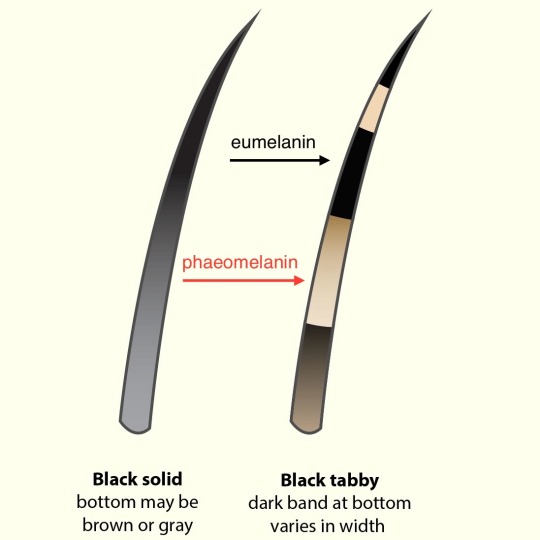
[Source: Sparrow’s Garden]
In tabby cats the “true” color is portrayed by the stripes, which is why what’s frequently referred to as a “brown tabby” is actually black-based.
The rufousing polygenes work on the banding in between.
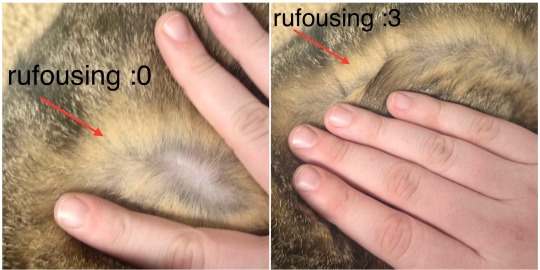
Here are some more examples!
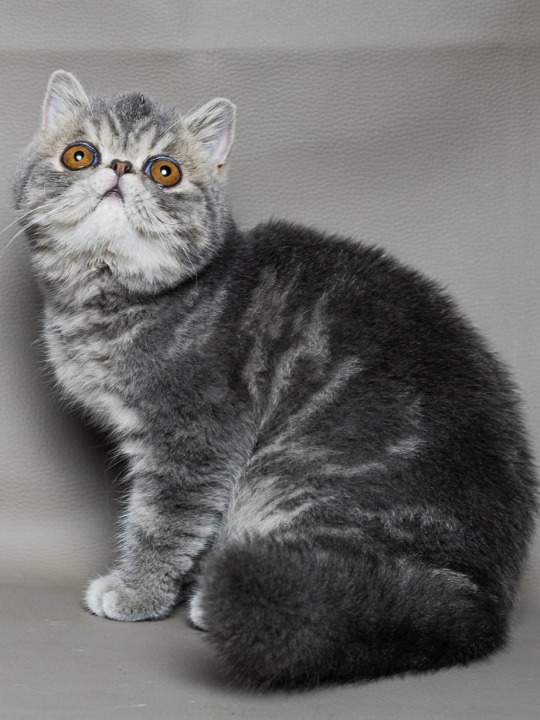
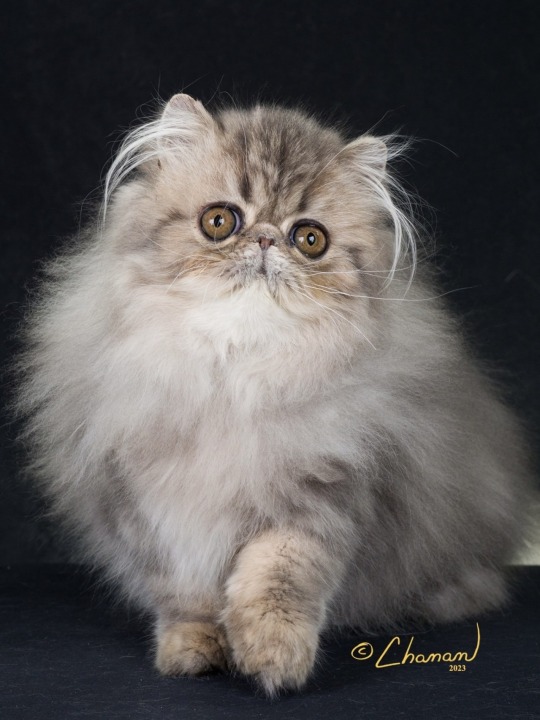
One the left is a cool-toned Exotic Shorthair with low rufousing from Puro Glamour and on the right we have a very warm-toned Persian with high rufousing from Belcanto.
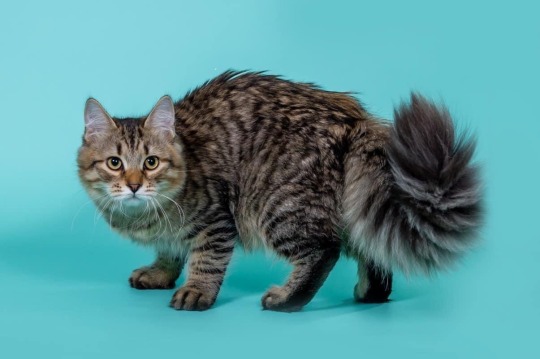
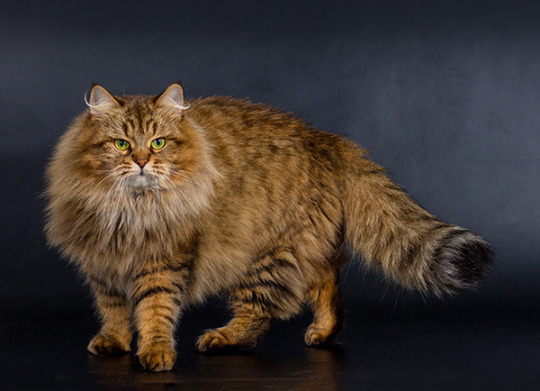
And then on the left we have a Siberian with low rufousing compared to the very warm-toned Siberian with high rufousing on the right. Both cats are from SarSibi.
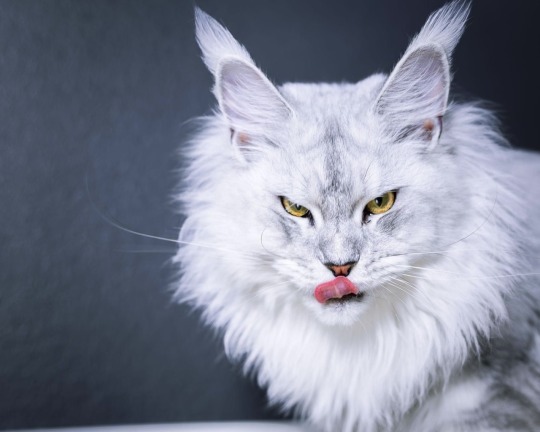
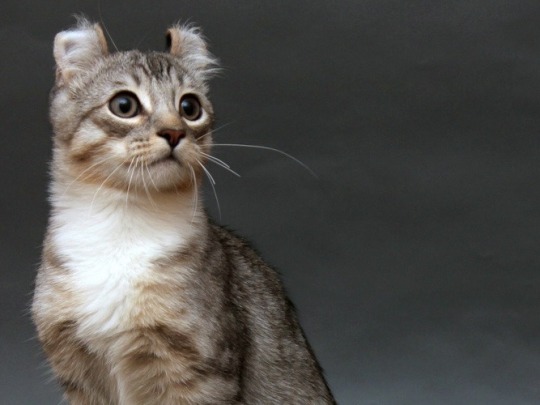
In silver cats rufousing is referred to as tarnishing. On the left we have a Maine Coon without tarnishing (tarnish id undesirable in the breed) from Imperial Family and on the right we have an American Curl with tarnishing from ILmatar. This cat is not a tortoiseshell.
2K notes
·
View notes
Link

The terms “pseudo-merle" or “merle effect” are only used here because there is no current term for this phenomenon in cats. I’ve used the terms descriptively, not genetically. I’ve used these terms to refer to non-dilute patches on a dilute colour, or to non-silver patches on a smoke, tipped/chinchilla or shaded silver cat.

In cats, there is no clearly identified gene and the effect it appears to be cosmetic only. Observation finds it to occur in smoke, tipped and shaded silver cats where some patches lack the silver undercoat. It appears to be most common on red-silver (chinchilla or shaded silver) cats that have non-silvered patches. It can occur in any breed…
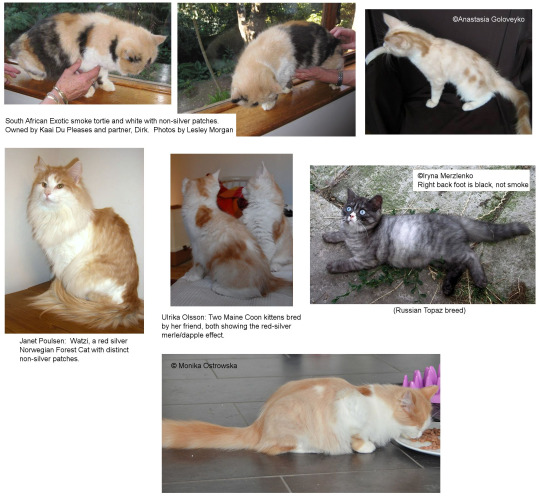
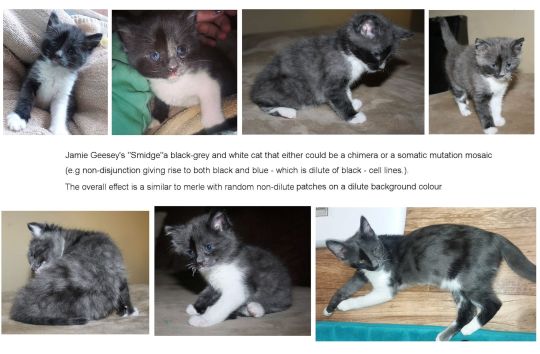
A pseudo-merle is found in the Topaz breed bred by Iryna Merzlenko (Cattery Nikita'l, Ukraine). These blue/black merle-pattern cats all have the silver gene and cannot all be chimeras due to their frequency. Although they look like a mix of smoke and solid colour, the different colours are due to the silver (inhibitor) gene working unequally in different parts of the coat giving darker and paler areas, but all with silver close to the skin. It appears to be linked to the blue-eye mutation and has occurred in a number of cats (and these are genetically related to the famous blue-eyed "Narnia” with his blue-and-black face, albeit not having the silver gene). Merle colour has been found in every litter with smoke kittens, and is often located on the belly or legs.
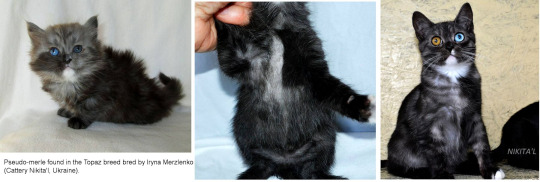
The underlying genetics are not yet known. No single mutation has been identified so genetic explanations are based on observation and on “what hasn’t been found.”
Many silvers seem to have some unsilvered patches, or patches where there is only a small amount of silver at the base of the hair-shaft. On those cats the expression of silver is variable, with a patchwork of light smoke and dark smoke areas. This could be due to polygene influences or even an unstable mutation that reverts during cell division i.e. a somatic mutation. For example, in e/e yellow/white dogs, these should have no black at all but often have scattered black hairs or small black patches.
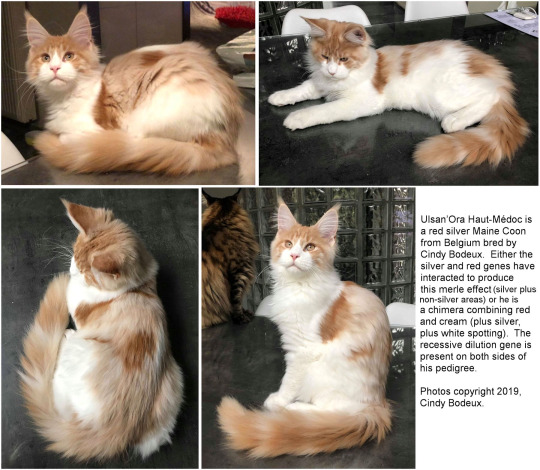
Could white spotting increase the likelihood of merle effect, for example could it cause the coloured patches to clump and scatter as it does in calico cats? Or is it an optical illusion because the silver undercoat and white patches are hard for the human eye to easily distinguish? In tortie smokes, the red seems to be more affected that the black by the merle effect and this suggests that phaeomelanin deposition is more affected than eumelanin deposition (in the same way that the non-agouti gene does not completely eradicate striping in “self red” cats). Where some red appears lighter and some is darker, perhaps the theorised “chaos” and “confusion” polygenes are involved and disharmonize uniformity of hair ticking and clarity of tabby markings.
Leslie Lyons has theorized that “silver” (white undercoat) may not be an exome mutation and that the visual effect is due to clonal differences in the regulation of pigment production or pigment transport. Others suggest that silver is a bit unstable and tends to revert to wild-type. Clonal differences means a change occurs in a skin cell and when this cell divides and multiplies as the embryo or kitten grows, the daughter cells all inherit the change (the change might be subtle or might be dramatic). A single skin cell that somehow suppresses the silver gene could give rise to a distinct patch on non-silver fur. A single patch may break up and move apart as the skin surface increases, resulting in several coloured patches with the gaps filled in by the base colour.
If silver was an exome mutation, it would already have been found as the feline genome is well studied. The exome is the part of the genome formed by exons. Exons are DNA sequences which, when transcribed, remain within the mature RNA in cells of any type and not just transcribed in specific cells as part of cell specialization. Exomes account for a very small percentage of the genome, but exome mutations can have dramatic effects.
The red-silver dapple pattern also seems more common in combination with white spotting, which suggests a link. Unlike true merle [in dogs], this pattern in cats is not linked to recessive white. Because pedigree cats with this pattern don’t meet exhibition standards, there hasn’t been selective breeding for the trait so data is limited.
881 notes
·
View notes
Text
Piebald in Cats
White spotting grades
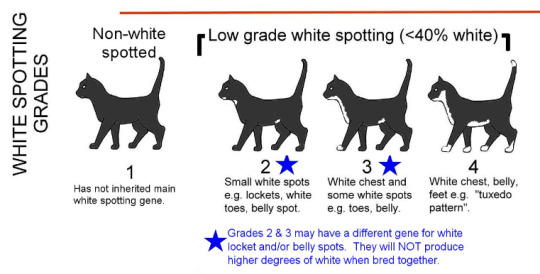
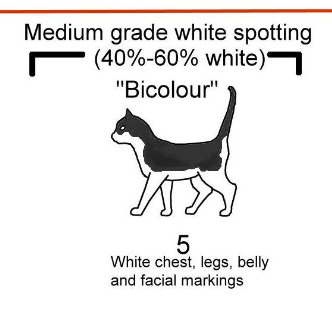

Eye colors + colloquial terms
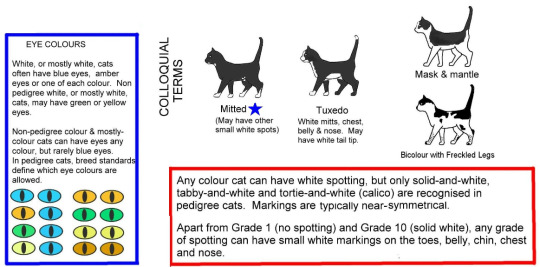
EYE COLOURS White, or mostly white, cats often have blue eyes, amber eyes or one of each colour. Non pedigree white, or mostly white cats, may have green or yellow eyes. Non-pedigree colour & mostly-colour cats can have eyes any colour, but rarely blue eyes. In pedigree cats, breed standards define which eye colours are allowed.
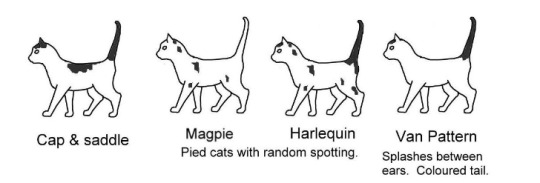
Geneticist terms
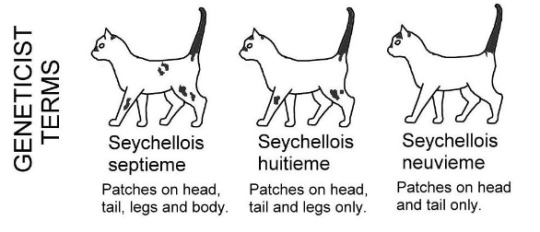
Unusual patterns (developmental)
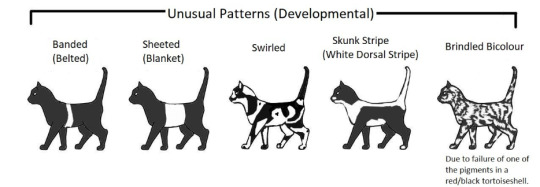
(Brindled Bicolour) Due to failure of one of the pigments in a red/black tortoiseshell.
Roan patterns
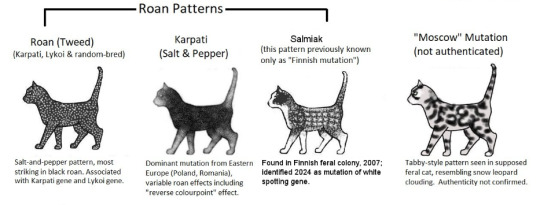
Salt-and-pepper pattern, most striking in black roan. Associated with Karpati gene and Lykoi gene.
Dominant mutation from Eastern Europe (Poland, Romania), variable roan effects including "reverse colourpoint" effect.
Found in Finnish feral colony, 2007; Identified 2024 as mutation of white spotting gene.
Tabby-style pattern seen in supposed feral cat, resembling snow leopard clouding. Authenticity not confirmed.
Age/health related
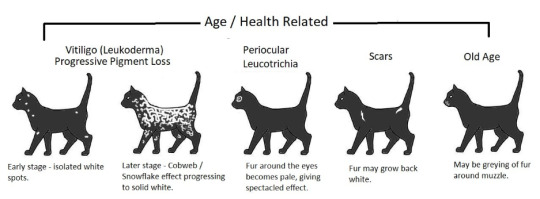
Early stage - isolated white spots.
Later stage - Cobweb/Snowflake effect progressing to solid white.
Fur around the eyes becomes pale, giving spectacled effect.
Fur may grow back white.
May be greying of fur around muzzle.
"Thai" white spotting gene (skunk stripe)

The Thai White Spotting pattern includes a white dorsal stripe and a white tail that may have a band or blotches of black. In Thailand, the pattern is called But-Se-Weis or But-Tal-Lon and various degrees of white—all with a dorsal stripe—are depicted in manuscripts. These patterns can also be seen in native Thai cats. The diagrams below show some of the variations.
Theories of how white spotting works - DISPROVEN
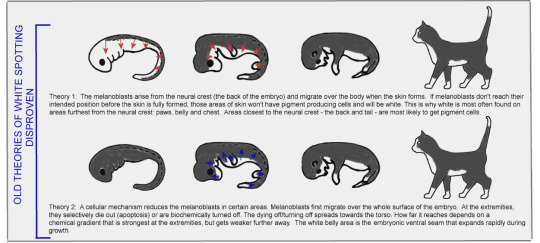
Theory 1: The melanoblasts arise from the neural crest (the back of the embryo) and migrate over the body when the skin forms. If melanoblasts don't reach their intended position before the skin is fully formed, those areas of skin won't have pigment producing cells and will be white. This is why white is most often found on areas furthest from the neural crest: paws, belly and chest. Areas closest to the neural crest—the back and tail—are most likely to get pigment cells.
Theory 2: A cellular mechanism reduces the melanoblasts in certain areas. Melanoblasts first migrate over the whole surface of the embryo. At the extremities, they selectively die out (apoptosis) or are biochemically turned off. The dying off/turning off spreads towards the torso. How far it reaches depends on a chemical gradient that is strongest at the extremities, but gets weaker further away. The white belly area is the embryonic ventral seam that expands rapidly during growth.
Theory of how white spotting works - PROVEN
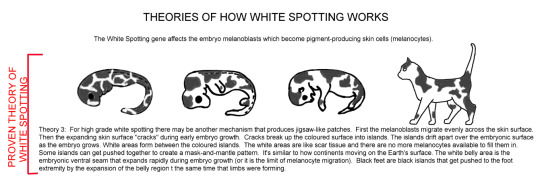
The White Spotting gene affects the embryo melanoblasts which become pigment-producing skin cells (melanocytes).
Theory 3: For high grade white spotting there may be another mechanism that produces jigsaw-like patches. First the melanoblasts migrate evenly across the skin surface. Then the expanding skin surface "cracks" during early embryo growth. Cracks break up the coloured surface into islands. The islands drift apart over the embryonic surface as the embryo grows. White areas form between the coloured islands. The white areas are like scar tissue and there are no more melanocytes available to fill them in. Some islands can get pushed together to create a mask-and-mantle pattern. It's similar to how continents moving on the Earth's surface. The white belly area is the embryonic ventral seam that expands rapidly during embryo growth (or it is the limit of melanocyte migration). Black feet are black islands that get pushed to the foot extremity by the expansion of the belly region the same time that limbs were forming.
CREDITS TO MESSYBEAST CATS
#cats#cat fact#cat drawings#cat facts#piebald cats#piebald#science#theories#interesting#biology#genetics#cat patterns#white spotting gene#cat genetics#cat science#mutation#cat mutation
20 notes
·
View notes
Text
How Tortoiseshell Cats Get Their Patterns

Ever wonder why every tortie cats aren't just 50% black and 50% red?
The X chromosome in cats determines color (orange or black).
There is a process named lyonization, or X-inactivation, that occurs in female cats. When the kitty embryo is growing one of the X chromosomes in each cell will randomly inactivate. The active X will be expressed.
B = orange b = black If the Xᴮ inactivates the cell will express black. If the Xᵇ inactivates the cell will express orange.
#tortoiseshell#tortie#tortie cat#cat fact#cat#tortoiseshell cat#science#biology#bioscience#interesting#gene#cat genetics#genetics#lyonization#x inactivation
10 notes
·
View notes
